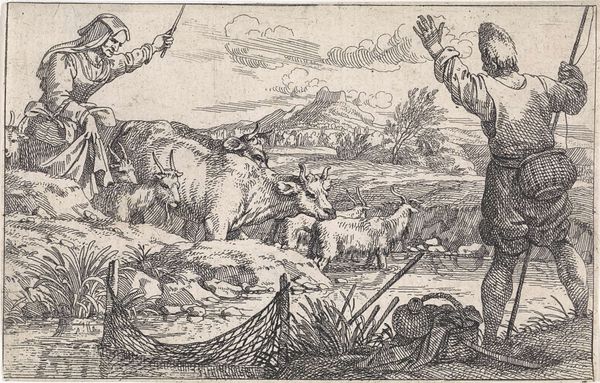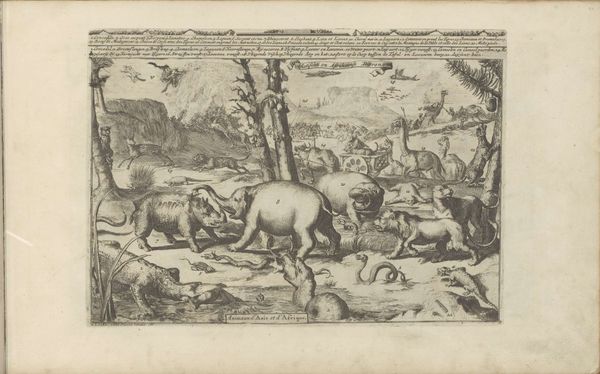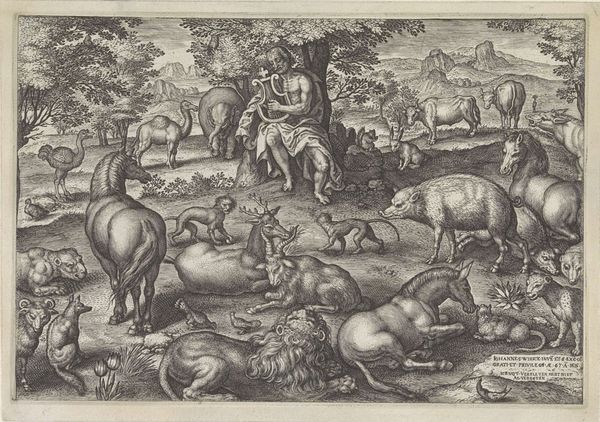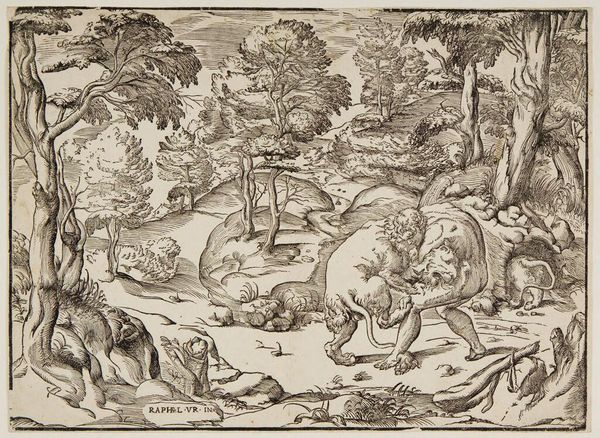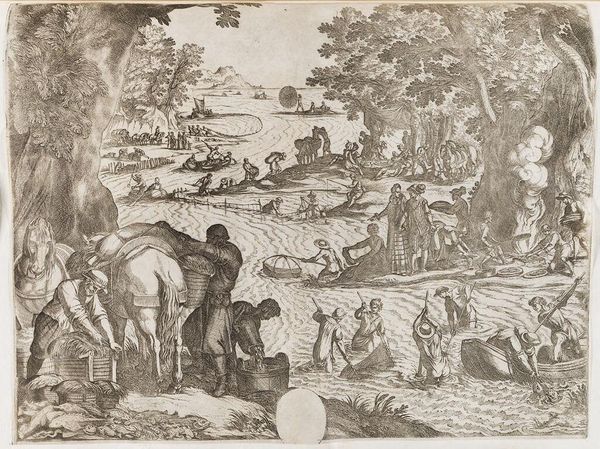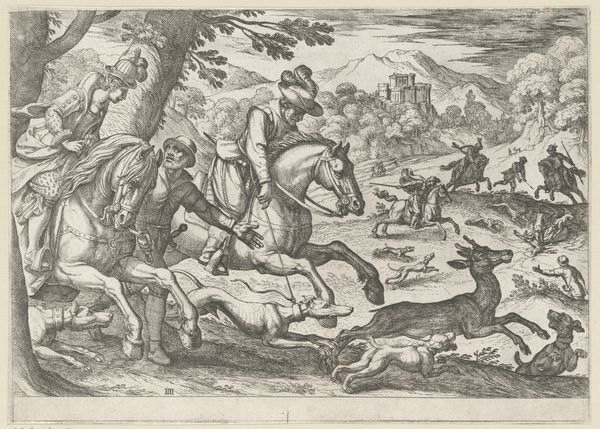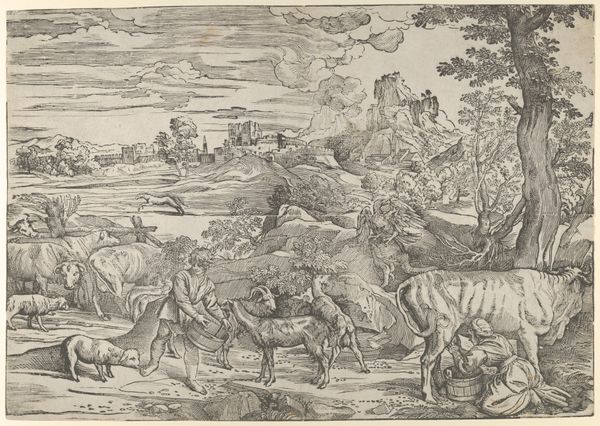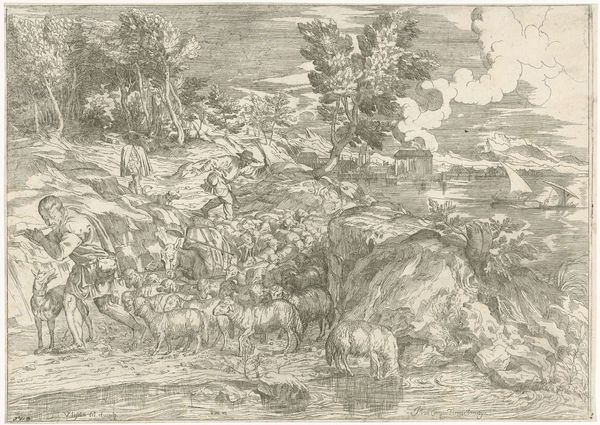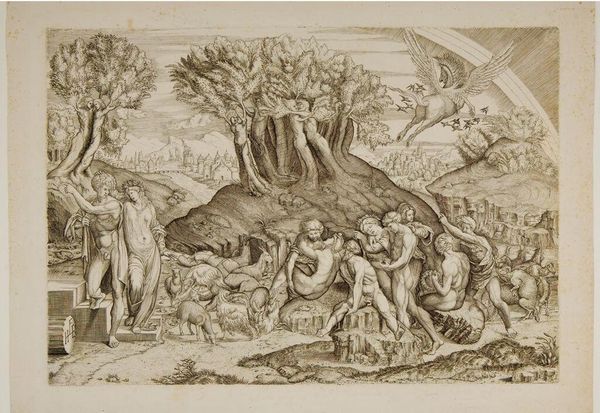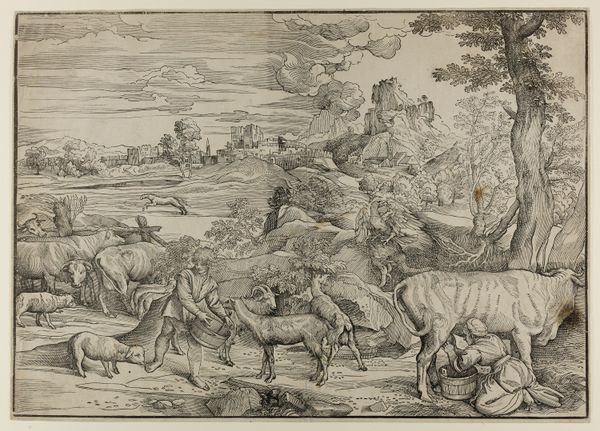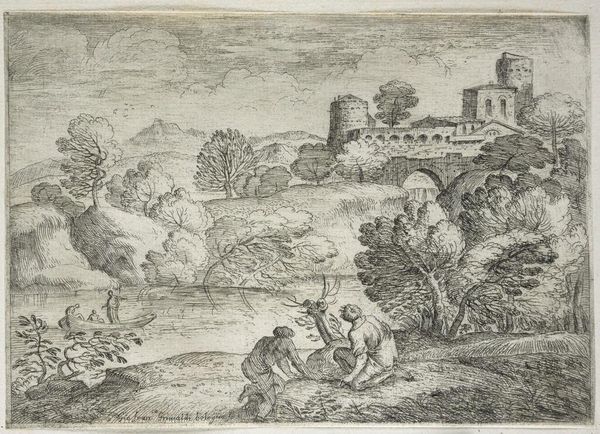
drawing, ink, engraving
#
drawing
#
baroque
#
pen drawing
#
pen illustration
#
pen sketch
#
landscape
#
ink line art
#
ink
#
genre-painting
#
engraving
Dimensions: height 204 mm, width 320 mm
Copyright: Rijks Museum: Open Domain
Curator: Valentin Lefebvre’s etching, dating somewhere between 1680 and 1749, "Slapende herders" depicts a rather idyllic pastoral scene. What are your initial thoughts? Editor: Immediately, I see the marks of its production—the dense cross-hatching of the engraving, the physical labor etched into this copper plate to translate the landscape and these sleeping shepherds into repeatable images. The material transformation is front and center. Curator: Yes! It’s amazing to think of the hand-work that went into something intended for reproduction. For me, it has such a gentle, dreamy feel. Look at the way the city in the distance fades into the sky. Like a beautiful half-remembered vision. Editor: Interesting. I fixate on the texture created by the varying density of the etched lines. The clouds almost look like they are made out of fabric, densely layered and quite palpable, you know? Curator: Indeed. The artist masterfully conveys a scene full of calm and quiet. Note the shepherds nestled amidst their flock, seemingly lost in slumber while vigilant sheepdogs keep watch. It speaks to a life intimately connected with the rhythms of nature, something idealized but perhaps also reflecting the economic realities of the time? Editor: Exactly. Who was this image intended for, what kind of labor and resources are embedded in that paper, ink and process, and how did this image then circulate within the economies of the period. You have the image of rural laborers juxtaposed to an urban audience—the negotiation and distance are tangible here. Curator: Absolutely. The details draw you in – from the playful rabbits in the foreground to the distant skyline. There’s a harmonious blend of reality and romanticism, don't you think? Editor: It’s a controlled artificial harmony, born from industrial reproducibility of an image of idealized pastoral simplicity. What does the artwork tell us and what does the making of the artwork reveal? Curator: A beautiful tension to consider, actually! So much work dedicated to revealing this image so elegantly. Editor: A collision, maybe? One we've only started to pick apart here.
Comments
No comments
Be the first to comment and join the conversation on the ultimate creative platform.

